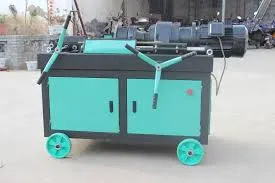
-
 Afrikaans
Afrikaans -
 Albanian
Albanian -
 Amharic
Amharic -
 Arabic
Arabic -
 Armenian
Armenian -
 Azerbaijani
Azerbaijani -
 Basque
Basque -
 Belarusian
Belarusian -
 Bengali
Bengali -
 Bosnian
Bosnian -
 Bulgarian
Bulgarian -
 Catalan
Catalan -
 Cebuano
Cebuano -
 Corsican
Corsican -
 Croatian
Croatian -
 Czech
Czech -
 Danish
Danish -
 Dutch
Dutch -
 English
English -
 Esperanto
Esperanto -
 Estonian
Estonian -
 Finnish
Finnish -
 French
French -
 Frisian
Frisian -
 Galician
Galician -
 Georgian
Georgian -
 German
German -
 Greek
Greek -
 Gujarati
Gujarati -
 Haitian Creole
Haitian Creole -
 hausa
hausa -
 hawaiian
hawaiian -
 Hebrew
Hebrew -
 Hindi
Hindi -
 Miao
Miao -
 Hungarian
Hungarian -
 Icelandic
Icelandic -
 igbo
igbo -
 Indonesian
Indonesian -
 irish
irish -
 Italian
Italian -
 Japanese
Japanese -
 Javanese
Javanese -
 Kannada
Kannada -
 kazakh
kazakh -
 Khmer
Khmer -
 Rwandese
Rwandese -
 Korean
Korean -
 Kurdish
Kurdish -
 Kyrgyz
Kyrgyz -
 Lao
Lao -
 Latin
Latin -
 Latvian
Latvian -
 Lithuanian
Lithuanian -
 Luxembourgish
Luxembourgish -
 Macedonian
Macedonian -
 Malgashi
Malgashi -
 Malay
Malay -
 Malayalam
Malayalam -
 Maltese
Maltese -
 Maori
Maori -
 Marathi
Marathi -
 Mongolian
Mongolian -
 Myanmar
Myanmar -
 Nepali
Nepali -
 Norwegian
Norwegian -
 Norwegian
Norwegian -
 Occitan
Occitan -
 Pashto
Pashto -
 Persian
Persian -
 Polish
Polish -
 Portuguese
Portuguese -
 Punjabi
Punjabi -
 Romanian
Romanian -
 Russian
Russian -
 Samoan
Samoan -
 Scottish Gaelic
Scottish Gaelic -
 Serbian
Serbian -
 Sesotho
Sesotho -
 Shona
Shona -
 Sindhi
Sindhi -
 Sinhala
Sinhala -
 Slovak
Slovak -
 Slovenian
Slovenian -
 Somali
Somali -
 Spanish
Spanish -
 Sundanese
Sundanese -
 Swahili
Swahili -
 Swedish
Swedish -
 Tagalog
Tagalog -
 Tajik
Tajik -
 Tamil
Tamil -
 Tatar
Tatar -
 Telugu
Telugu -
 Thai
Thai -
 Turkish
Turkish -
 Turkmen
Turkmen -
 Ukrainian
Ukrainian -
 Urdu
Urdu -
 Uighur
Uighur -
 Uzbek
Uzbek -
 Vietnamese
Vietnamese -
 Welsh
Welsh -
 Bantu
Bantu -
 Yiddish
Yiddish -
 Yoruba
Yoruba -
 Zulu
Zulu
Working Principles of OEM Thread Rolling Machines Explained in Detail
Understanding OEM Thread Rolling Machines Working Principles and Applications
In the world of precision engineering, the manufacturing of threaded components is a crucial aspect. One of the most effective methods for producing threads is through the use of OEM (Original Equipment Manufacturer) thread rolling machines. These machines utilize a unique process to form threads on metal components. In this article, we'll delve into the working principles of thread rolling machines, their advantages, and their applications across various industries.
What is Thread Rolling?
Thread rolling is a cold forming process that creates threads on a workpiece by displacing material rather than cutting it away. This method is not only efficient but also enhances the mechanical properties of the material. The process involves the use of hardened rollers that press against the workpiece, progressively deforming it into the desired thread shape. The result is a strong, continuous thread that exhibits excellent dimensional accuracy.
The Working Principle of OEM Thread Rolling Machines
OEM thread rolling machines are designed for high efficiency and reliability, which are vital for mass production. The basic working principle of these machines can be broken down into several key steps
1. Feeding the Workpiece The process begins with the raw material, usually in the form of a rod or bar, being fed into the machine. The length and diameter of the workpiece will depend on the specifications required for the final product.
2. Roller Positioning Once the workpiece is in place, the thread rolling machine positions two or three rollers around it. These rollers are specifically shaped to create the desired thread profile.
3. Rolling Operation The rollers are then moved towards the workpiece with significant force. As the rollers rotate, they apply pressure on the metal, causing it to flow and form the threads. The process can be performed in a variety of thread profiles, including metric, inch, and custom designs.
4. Cooling and Finishing After the threads have been formed, cooling systems may be employed to ensure that the workpiece retains its shape without overheating. Some machines also include finishing processes for chamfering or deburring the threaded components.
5. Quality Inspection Finally, the threaded components undergo quality control checks to ensure dimensional accuracy and surface finish meet the required standards. This may include using computer-aided inspection tools or manual measurement techniques.
Advantages of Thread Rolling
oem thread rolling machine working

Thread rolling offers several advantages over traditional cutting methods
- Increased Strength Since the material is not cut but rather displaced, the threads produced are generally stronger and have a higher resistance to fatigue.
- Cost-Effectiveness The cold forming process consumes less material and minimizes waste, making it a more economical option for large-scale production.
- Improved Surface Finish The rolling process results in a smooth surface finish, often eliminating the need for additional machining operations.
- High Production Rates OEM thread rolling machines are designed for fast operation, enabling manufacturers to produce large quantities of threaded components quickly.
Applications of OEM Thread Rolling Machines
OEM thread rolling machines find extensive applications across various industries
- Automotive Used for producing fasteners, bolts, and nuts that require high strength and reliability.
- Aerospace Essential for creating lightweight yet strong components subjected to high stress.
- Construction Employed in the manufacturing of threaded rods and anchors for structural applications.
- Machinery and Equipment Used to produce various threaded components that are vital for assembly and functionality.
In conclusion, OEM thread rolling machines represent a critical technology in the manufacturing of threaded components. Their ability to produce high-quality, strong, and precise threads makes them invaluable across multiple sectors. As technology evolves, we can expect even greater advancements in thread rolling methods, improving efficiency and expanding their applications in the manufacturing landscape.
